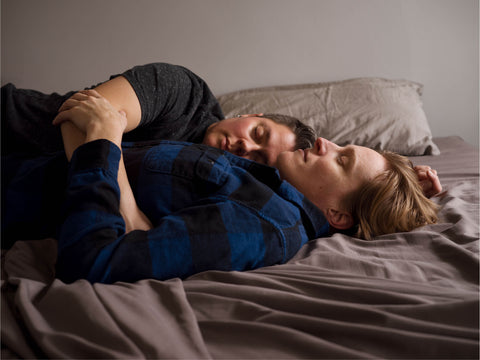
i.
Yes, there are facts and figures to account for, timelines to trace, but have I told you of today’s newspapers? Headlines like: ‘Land Justice’, ‘Expropriation without Compensation’, ‘Revolution or Reform?’ Have I told you of the monuments removed in the ‘riots’? Or the groundsmen in green overalls scrubbing graffiti, repairing broken fountains, collecting debris? Black men White bosses still call ‘boys’? Have I told you of the doves cooing gently, perched atop the sleeping bodies of migrant families on the lawns? Have I told you of the White children from the Cape of Good Hope Seminary dressed in their afternoon ‘civilian clothes’? Or of the more racially integrated group from Mseki High in their grey- and-turquoise uniforms surrounding me on the main steps leading to the garden? The cacophony of lunch-time chatter, chip packets crinkling, the flap-flap of wings as seagulls scavenge for tasty morsels? Have I told you of the signs pointing to the Scientific Pleasure Garden? Or of the gift store filled with locally sourced flower oils, handmade candles, Delft-blue china tea-sets and postcards depicting the early colony? And what of Cecil John Rhodes cast in greening bronze, flanked by a Madagascar Cycad and a Queen Palm, announcing: Your Hinterland is There? Have I told you of the small rock in the corner of the vegetable garden with a label hidden beneath weeds? The arrival of the Dutch to establish a refreshment station, providing fresh produce for the ships plying the spice route, marked the end of a free and independent existence for the native Gorinhaiqua Khoikhoi. And what of the large label at the stone-walled entrance? A story of how a garden in 1654 brought together continents and affected the course of history. A story of how plants in the form of pepper, nutmeg, cloves and cinnamon changed the world economy. Have I told you the garden is the cause of it all?

ii.
No, the cause of it all, I read, is the ocean. Or more precisely, the ocean currents. The secret to power was the currents directed by the prevailing winds, which were in turn governed by the rotation of the earth. The cause of it all, therefore, is the rotation of the earth. A circular force along ‘the world’s highway’, onwards towards vast fortunes.
These words, I encounter in a foldout map from a 1943 edition of Life magazine, and again on the wall of the oldest building in the Company’s Gardens.
iii.
“I come from the Cape, I say. I come from Cape Town, I come from a farm in the Eastern Cape, I come from South Africa, yes, a country. I come from New York, no, not American, I live in the United States. I come from Africa, no, not Black, White, yes, I am a White South African. I come from Europe, no, not European, I come from the 1652 Dutch settlers, not the 1820 English settlers, I’m English, no, not from England, South African but not Afrikaans, I speak English.
Though disorienting, these small misunderstandings are productive for my research. In the years of moving back and forth between countries, I have observed stories becoming unpredictable, changing with each telling. Movement brings confusion such that I notice acutely the meanings of words shifting from place to place. All certainty vanishes, naturally, and even the plainest of statements becomes unreliable.
iv.

Who comes from where? Who was here? Who settled here? Who settled when? What settled in? What words settled? Who passed through? Who passed on? Whose story passed? Whose story stayed? What walls were built? How did words wall? How did words kill?
Questions reverberate. They aren’t new or mine alone, but they recur, over and over.
v.
Now, perhaps you’re already able to tell, there will be no events threaded along a straight line, there will be no forward march. Still, I’m grappling with chronologies and trajectories in a way that is maddening. It’s a question of organising principles. It’s the scope and breadth of it all. It’s that I don’t know how to tell only a part of the story or perhaps, given that time is never enough, that I’m stuck at every turn asking: which parts?
The act of traveling feels useful—a journey towards and away from the Cape of Good Hope in a repetitive motion. Not because the effects of it all are particular to the Cape, but because it strikes me as important to position myself in space and time, to find a temporal-spatial axis along which I’m able to proceed with an attentive eye, moving inward and outward, backwards and forwards.
The Cape’s location at the mid-point along the spice route holds potential here, allowing for perverse extrasensory exercises, psychic historical reenactments. Not to cooperate with the triumphal procession nor empathise with ‘the victor’, carrying him forward, reifying the status quo, but rather—fraught or foolish as it may be—to see what travels through me, act as interlocutor, root him out, somehow put an end to it all.
vi.
And so it is that the trade winds carry me across my divide. At least this is what I imagine as I move in circles: in the ship, in the sky.
—there to here—here to there—there to here—here to there—

Unending ocean becomes a sea of Dutch-named streets (Van Wyck, Gansevoort, Nassau, Bleecker); becomes a sea of Wall Streets, border walls and canals; becomes a sea of African gold and fragile currency; becomes a sea of minerals, metal, mirrors and yellow cabs; becomes a sea of fruit, flowers, fynbos and shipping containers; becomes a sea of invasive alien Jacaranda trees; becomes a sea of protest signs, bricks, tents, tires and smoke.
Extract from Good Hope by Carla Liesching

OTA bound paperback with flaps
15. 3 x 20.3cm, 192 pages
ISBN 978-1-913620-42-4
October 2021
€30 £25 $35
Add to cart





